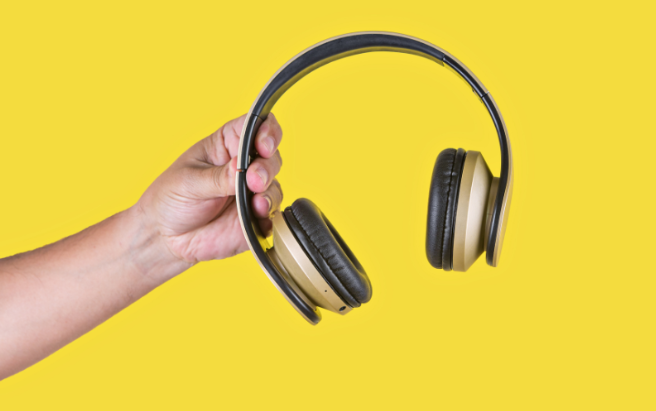Over-ear headphones fully enclose the ears with large ear cups that provide a cushioned fit. This design distributes pressure evenly, making them comfortable for extended use. The padding helps reduce ear fatigue, which is beneficial for long listening sessions. On-ear headphones rest directly on the ears, which makes them lighter and more compact, but they may cause discomfort after prolonged wear due to the pressure applied to the ear.
Sound Quality and Audio Experience
Over-ear headphones deliver a more immersive listening experience by creating a larger soundstage. The enclosed design enhances bass response and sound clarity, making them suitable for users who prefer rich audio quality. Noise isolation is also more effective, reducing external distractions. On-ear headphones still offer strong sound performance but may let in more ambient noise due to smaller ear cups. This can be good for those who prefer situational awareness while listening to music or taking calls.
Noise Isolation and Noise Cancelling Features
Noise cancelling headphones are often designed as over-ear models because the larger ear cups allow for better passive noise isolation. Active noise cancellation technology works more effectively when external sounds are sealed out by the headphone design. On-ear headphones provide less passive noise isolation since they do not fully cover the ears, making them less effective in noisy environments. Those who commute frequently or work in busy spaces may prefer the stronger noise reduction of over-ear headphones.
Portability and Convenience
On-ear headphones are more compact and lightweight, making them easier to carry. They take up less space in a bag and are ideal for travel or outdoor activities. Over-ear headphones, while bulkier, often include foldable designs for portability. Wireless headphones in both styles eliminate cable clutter, allowing for greater movement and flexibility. Choosing between the two depends on whether portability or a larger, more immersive design is the priority.
Battery Life and Power Efficiency
Wireless headphones require battery power, and over-ear models typically offer longer battery life due to their larger size, which allows for bigger batteries. Noise cancelling headphones use additional battery power to operate noise reduction features. On-ear headphones tend to have slightly shorter battery life because they house smaller batteries. Checking battery specifications before purchasing ensures that the chosen model meets daily usage needs.
Learn More: How Open-Ear Earbuds Change the Way You Hear the World
Durability and Build Quality
Over-ear headphones are designed with larger components, which can make them more durable in the long run. However, their size may get damaged if not stored properly. On-ear headphones, being smaller and lighter, are easier to handle but may experience wear and tear more quickly due to pressure on the ear cups. Choosing a well-built design with high-quality materials can improve longevity regardless of the headphone style.
Suitability for Different Activities
Over-ear headphones are ideal for at-home use, gaming, and professional audio work for their superior sound quality and comfort. They work well for long listening sessions but may not be as convenient for outdoor use. On-ear headphones balance portability and sound performance, making them suitable for travel, commuting, and casual listening. Wireless headphones in either style provide flexibility, but the choice depends on whether comfort or portability is the main priority.
Making the Right Choice
Selecting between over-ear and on-ear headphones depends on individual needs and preferences. Over-ear models provide better sound isolation, comfort, and deep bass, making them ideal for immersive listening. On-ear headphones are lightweight and convenient for on-the-go use, offering a more compact alternative. Evaluating personal usage habits helps determine which type of headphones will offer the best experience.
For more information about wireless earbuds solutions, contact One Futureworld today.

